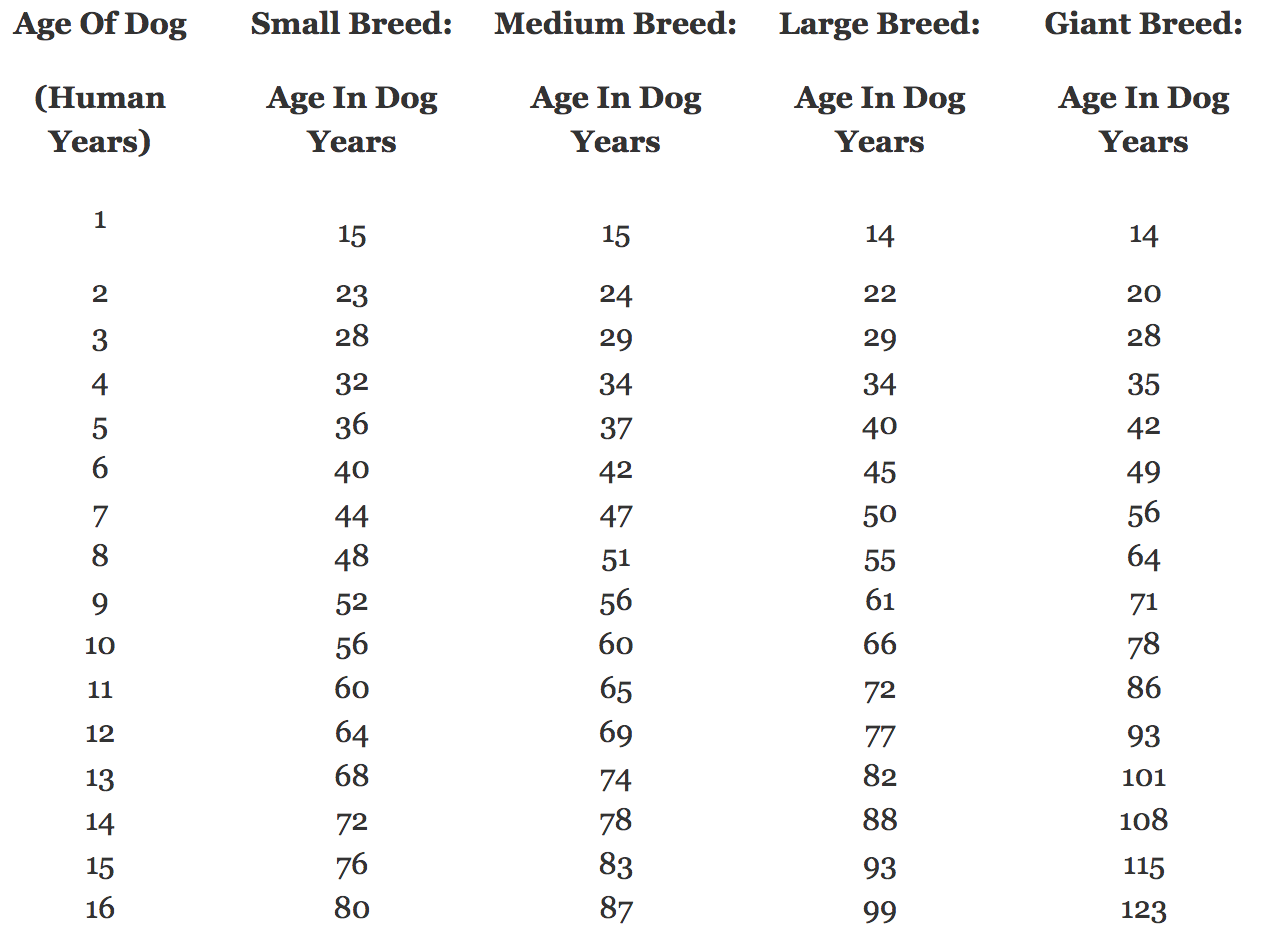Dogs age at different rates compared to humans, but the simple rule of seven dog years to one human year is far from accurate.
If humans actually aged seven times slower than dogs, then many of us would be able to reproduce at age seven and live to be 150 years old. Obviously, that's not the case.
The reason that dogs can reach full sexual maturity after only one year of being born is because our canine friends age faster during the first two years of their lives than humans do.
Even this general statement is slightly off since smaller breeds tend to mature faster than larger breeds.
Compared to humans, dogs age more quickly at the beginning of their lives and slower toward the end. Therefore, calculating your dog's age relative to yours isa bit tricky, but luckily it's possible.
Since smaller breeds tend to live longer than larger breeds, it's important to calculate your dog's age according to the right category: small (9.5 kg or less), medium (9.6 kg - 22 kg), large (23 kg - 40kg), or giant (over 41 kg).

Although the origins of the seven-year myth is unknown, people have been trying to find a good way to calculate dog years in human years since the 1200s.
One of the earliest examples of this is an inscription at Westminster Abbey that dates back to the year 1268 and calculates that one human year is equivalent to nine dog years, which was part of some strange way to calculate the end of the world in the 1200s.
The seven-year rule is thought to much more recent. A veterinarian at Kansas State University told The Wall Street Journal: "My guess is it was a marketing ploy. It was a way to encourage owners to bring in their pets at least once a year."
A version of this story was first published October 2014.
This article was originally published by Business Insider.
More from Business Insider:
